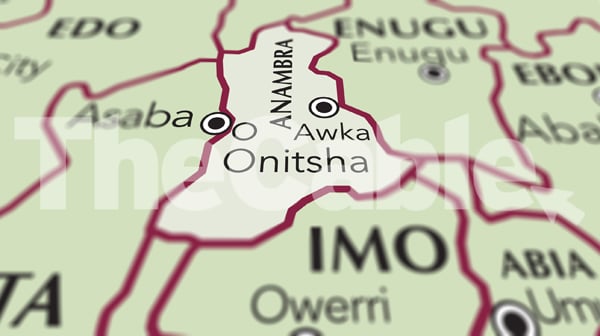Tiny creatures are big business: Smuggled ants worth R4,163 each on black market
15 May 2025 - 14:31
 Just R20 for the first month. Support independent journalism by subscribing to our digital news package.
Just R20 for the first month. Support independent journalism by subscribing to our digital news package.
Samples of garden ants concealed in syringes are presented to court as two Belgian nationals, a Vietnamese and a Kenyan national appeared for the hearing of their case, after they pleaded guilty to illegal possession and trafficking of garden ants, at the Jomo Kenyatta International Airport (JKIA) Law Courts, in Nairobi, Kenya, on April 15 2025.
Image: REUTERS/Monicah Mwangi
While much of the world’s attention is focused on the poaching of charismatic megafauna like elephants, pangolins and rhinos, a quieter, less visible crisis is unfolding beneath our feet, one involving some of the smallest animals on the planet — invertebrates.
Earlier this year, two Belgian teenagers were apprehended in Kenya with 5,000 ants in their possession. They were given a choice of paying a fine of $7,700 (R139,372) or serving a minimum 12-month prison sentence under Kenya's wildlife conservation laws.
Senior lecturer in invertebrate biology at the University of KwaZulu-Natal Caswell Munyai said the global trafficking, or smuggling, of ants, spiders, scorpions and other invertebrates is complex and diverse.
“Besides being traded for food, most invertebrates are targeted for their use in traditional medicine. Also there has been a growing demand for trading arthropods targeted for the pet trade,” said Munyai.
According to Ant Authority, queen ants can cost between $20 (R362) and $60 (R1,086), depending on species and season. Rare species like the jumper jack or bull ant queens go for up to $230 (R4,163) and $120 (R2,172) respectively.
Though common pavement ants might only sell for about $27 (R489), the more exotic species, especially those from the Global South, are a hot commodity on online marketplaces, which is often illegal.
“Some of the most trafficked or well-known invertebrates involved in trading between global markets are those in the phylum mollusca, which includes snails, mussels, octopus and arthropods, such as insects, spiders,” said Munyai.
“For mollusca, they are heavily trafficked due to the high demand for seafood and their shells, which are probably used in jewellery and decorative items.”
Munyai said when it comes to arthropods, ants, spiders, stick insects and scorpions are particularly targeted.
“There has been a spike in the past decade or two, particularly involving arthropods being trafficked from countries in the Global South and sold in developed countries.”
While the motivations are diverse, some are collected for use in exotic food dishes or traditional medicine while others are sold in pet shops or online and destined for formicariums in homes far removed from their native habitats, he said.
Spiders and scorpions that are being trafficked out of their native ecosystems have important predatory roles. They help manage pest populations which, if left unmanaged, pose serious problems to agriculture and ecosystems
Caswell Munyai, Senior lecturer in invertebrate biology at UKZN
Beyond the legal and ethical concerns, the ecological consequences of invertebrate trafficking are immense.
“Despite the obvious impact related to the disruption of the natural balance of the ecosystem where these species occur, the trade has cascading negative effects. It affects food chains, species interactions and even ecosystem service provisioning and functioning,” said Munyai.
A recent case that illustrates the problem starkly is that of an attempt to smuggle the African Harvester Ant out of Kenya last month.
Munyai said this species plays a critical role in seed dispersal, helping maintain the health of native ecosystems, and that removing such a species disrupts not only plant regeneration but also the food web.
“Spiders and scorpions that are being trafficked out of their native ecosystems have important predatory roles. They help manage pest populations which, if left unmanaged, pose serious problems to agriculture and ecosystems.”
Munyai said there can be consequences long after these creatures are sold.
“Some of these, unfortunately, become serious pests (alien invasive species). This happens when the owners or those who initially bought them no longer want them, or when they escape into the wild.”
Munyai says enforcement remains patchy.
“On paper, there are good wildlife protection laws here in South Africa and globally. But on the ground, quite a lot is happening unchecked. Most conservation attention still goes to 'charismatic' wildlife. Very few cases are reported for things like ants. That’s why the Kenyan case caught so much attention — people were shocked.”
Despite comprising 95-97% of all known animal species, invertebrates remain vastly understudied and underfunded in conservation.
“These little things run the world. They are everywhere, from our intestines to our houses, and our fields, playing roles in pollination, pest control and nutrient cycling. Yet very little to nothing is known about the distribution patterns of our invertebrate biodiversity.”
According to Munyai, funding for invertebrate research pales in comparison to that for vertebrates. Conservation planning often prioritises larger animals, leaving invertebrates as an afterthought.
“We need more studies on the distribution and ecology of invertebrates. We need to increase public awareness and interest in these animals, which I hope will increase the general concern for their conservation.”
The recent spike in attention to the trafficking of invertebrates may be the start of a turning point. But Munyai is cautious.
“This is happening under our noses. If you look at some of our pet shops, you will know. We really need to look into what is leaving through our ports — by sea, land, or air,” he warned. “By the time we realise this, it may be too late.”
 Just R20 for the first month. Support independent journalism by subscribing to our digital news package.
Just R20 for the first month. Support independent journalism by subscribing to our digital news package.











